The Tijuana Estuary participates in the National Estuarine Research Reserve (NERR) System Wide Monitoring Program (SWMP). This program is designed to measure changes in estuarine water quality, habitat and land use and provide information on environmental trends. For more accurate and visual data, GIS data collection methods are often used for monitoring projects. The National
Oceanic and Atmospheric Administration (NOAA) funds SWMP which is standardized throughout the NERR system.
Part of SWMP includes the system monitoring of Los Penasqutos Lagoon in northern San Diego County. To learn more, visit Los Penasquitos Lagoon Monitoring.
Weather Station
The weather station monitors temperature, rainfall, humidity, barometric pressure and wind speed and direction. The Tijuana Estuary’s weather station is located just outside the Visitor Center. For near real time weather data click here.
Data Loggers
At the Tijuana Estuary, three YSI 6600 data loggers are used to measure water depth, temperature, salinity, dissolved oxygen, turbidity (cloudiness or clarity) and pH. The Tijuana Estuary staff monitors three units. (Visit http://cdmo.baruch.sc.edu/get/export.cfm to see data logger data from the 29 NERRs.) The data logger units are immersed in the water at three different sites and continuously measure at 30 minute intervals. The units are retrieved and calibrated every two weeks at low tide. After the data has been downloaded the data loggers are replaced.
 Fish, Invertebrate and Vegetation Monitoring
Fish, Invertebrate and Vegetation Monitoring
Vegetation and soil salinities – Soil salinities and vegetation parameters are measured at 12 monitoring station located in three habitat types: low-marsh, marsh plain and high-marsh.
Fish monitoring – Fish and mobile macro invertebrates are caught, identified, counted and later released. The data allows researchers to determine fish and crab densities, population size and relative species composition.
Invertebrate monitoring – Core samples are taken back to the lab. Once animals have been picked out of the sample, individuals are identified to the lowest taxonomic level possible and enumerated.


